What To Know
Tandem Skydiving Requirements
Get Ready for the Best. Day. Ever.
There are three types of people who tandem skydive:
- Those who’ve had their eyes on the skies since childhood and cannot wait to jump
- Those who’ve had a significant life experience and want to commemorate it; and
- Those convinced to jump by their friends and fight the what-am-I-doing feeling right up until they take the leap!
No matter which path you take to your first jump, we all have the same question before booking a skydive: Do I qualify to make a tandem skydive?
General skydiving requirements include:
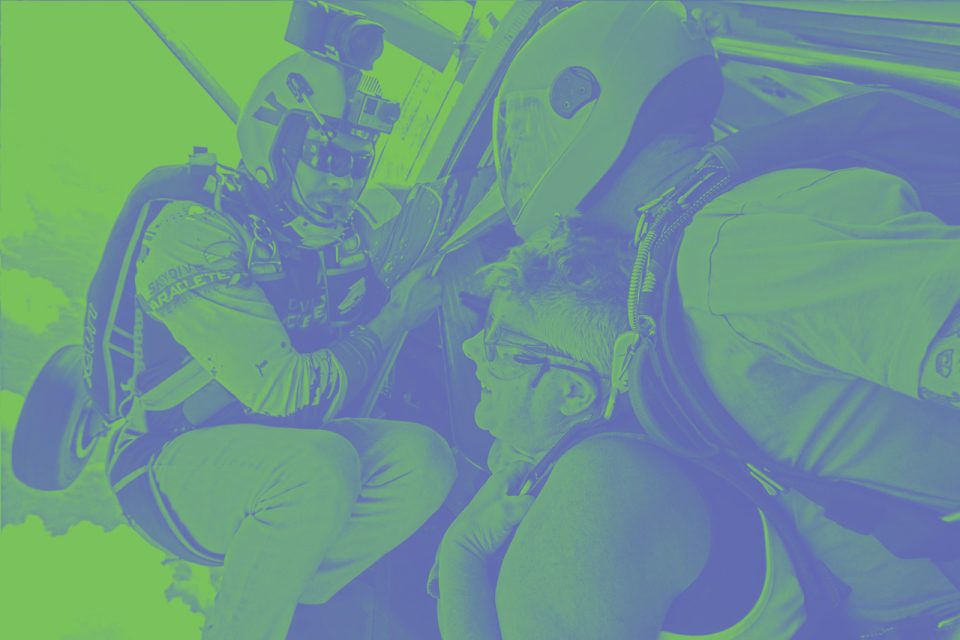
Maximum skydiving weight limit
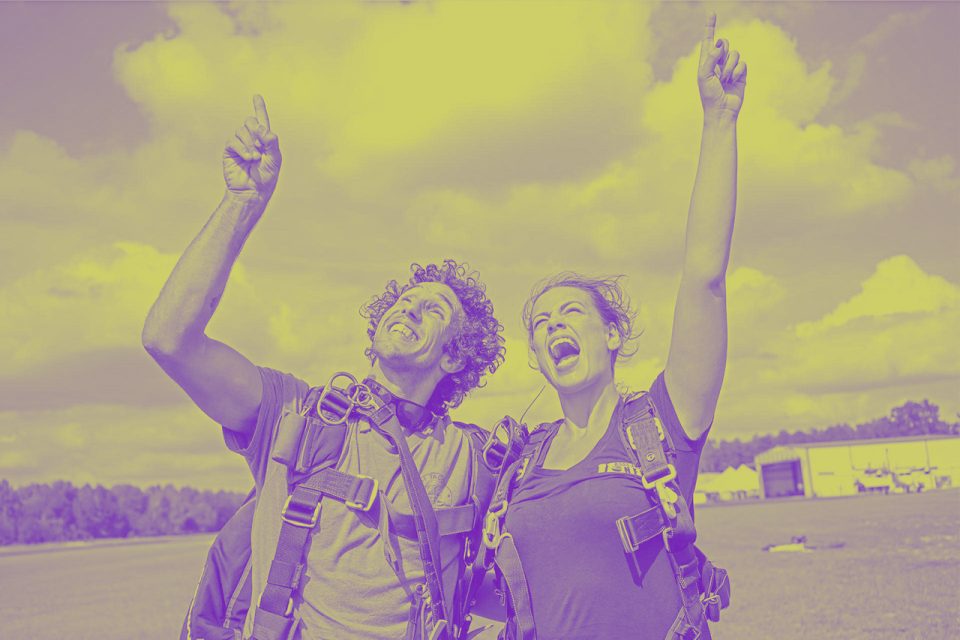
Minimum skydiving age

General good health
Minimum Age for Tandem Skydiving
How old do you have to be to skydive? Skydiving rules differ from one country to the next, but most frequently the published minimum age to skydive is 16 or 18. More often than not, parents must give written consent for tandem students under 18 and remain at the dropzone throughout the duration of their skydiving experience.
| Country | Minimum Age |
| Australia | 16 years old |
| Brazil | 16 years old |
| Canada | 16 years old |
| Colombia | 12 years old |
| Croatia | 14 years old |
| Czech Republic | No minimum age |
| Denmark | No minimum age |
| Dubai | 18 years old (12 years old at The Palm) |
| England | 16 years old |
| Finland | 15 years old |
| France | 15 years old |
| Germany | 12 years old |
| Italy | 16 years old |
| Ireland | 16 years old |
| Mexico | 16 years old |
| New Zealand | No minimum age |
| Norway | 16 years old |
| Portugal | 16 years old |
| South Africa | 16 years old |
| Spain | 16 years old |
| United States | 18 years old |
Maximum Age for Tandem Skydiving
Best news ever: there is no maximum age limit for skydiving! If you are generally healthy and reasonably physically fit, you can make a tandem skydive! As a matter of fact, the oldest male and female tandem skydiver currently on record were both 103 when they made their most recent jumps!
Some dropzones, though, do require jumpers over a specific age to present written consent from their physician before skydiving. Check with your dropzone before making your booking.
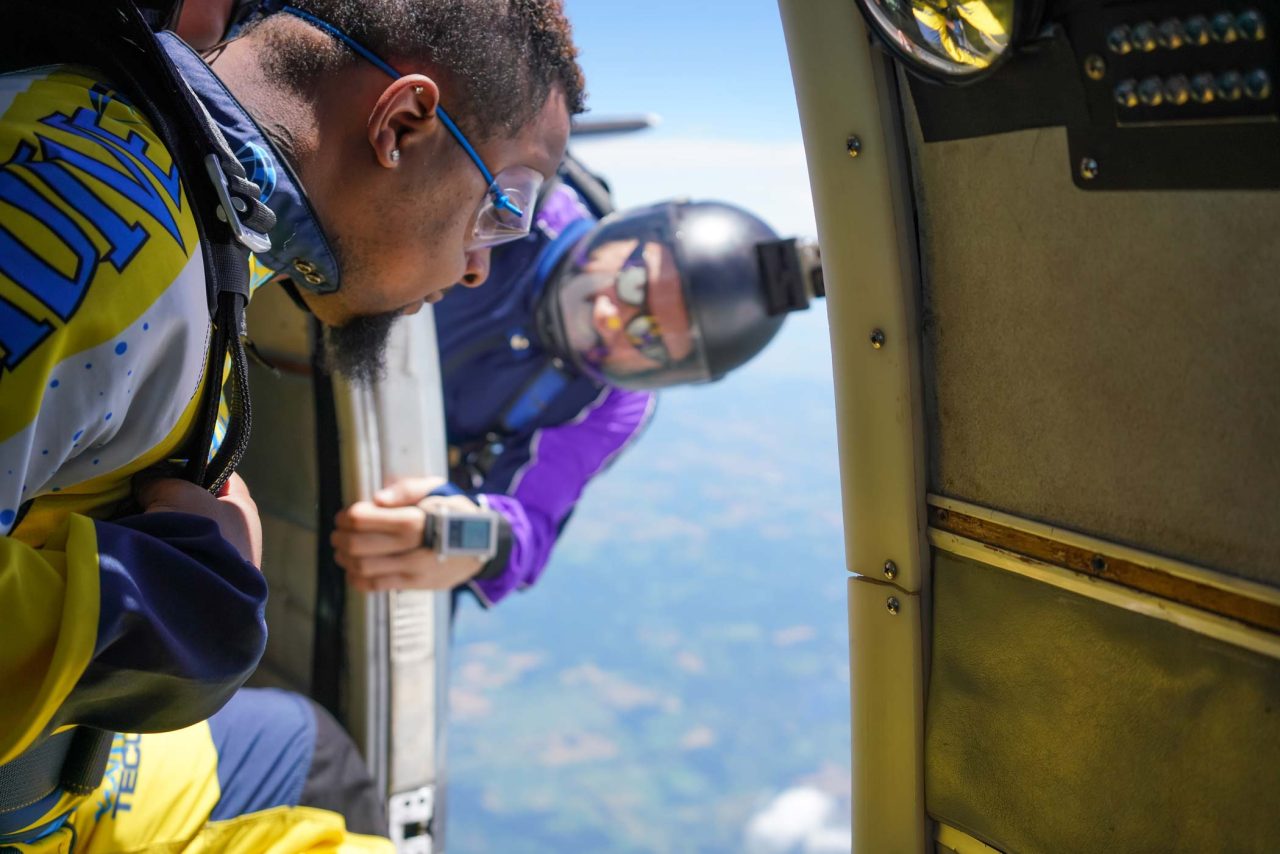
Tandem Skydiving Weight Limit
Skydiving weight limits are imposed for safety and comfort reasons; they are not intended to be discriminatory or exclusive.
Manufacturers of skydiving gear determine the maximum amount of weight a specific rig can safely accommodate. The maximum weight limit for skydiving rigs is often restricted to a total of 500 lbs (227 kg), including the weight of the tandem student, the tandem instructor, and the gear itself, which typically weighs about 30 lbs (17 kg). With tandem rigs supporting two people, many DZs set their weight limit for tandem students to between 240 lbs and 260 lbs (109 kg – 118 kg). Additionally, individuals must be proportionate in height and weight.
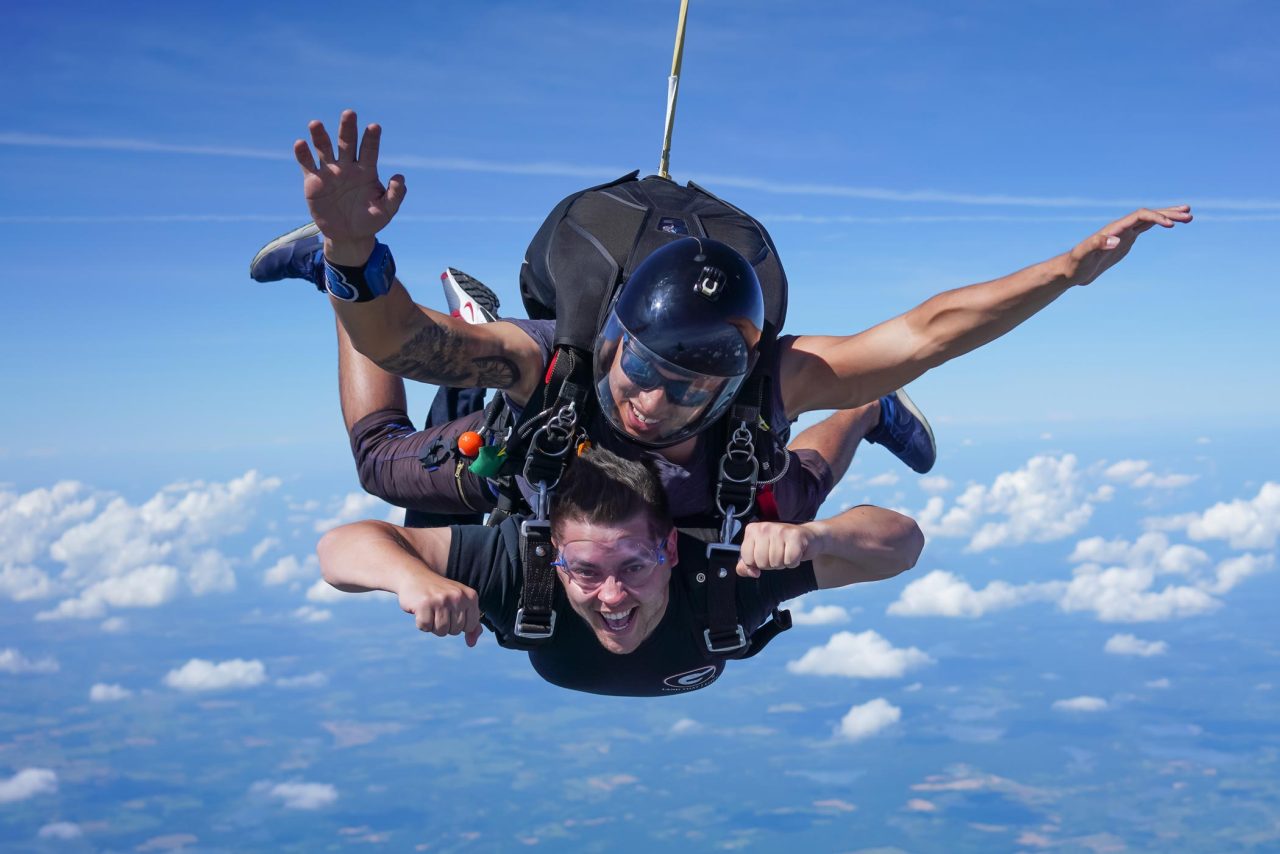
Physical Requirements for Skydiving
As a tandem skydiver, you are more than a passenger! During freefall, you must perform the classic belly-to-earth flying position known as the arch and, when approaching the landing area, you must lift your legs so the instructor can safely touch down.
There are specific medical conditions that prevent skydiving, which may include a heart condition (also high blood pressure and pacemaker), respiratory conditions, dislocation or joint mobility issues, and fainting/blackouts. Skydiving health restrictions and concerns should be discussed with your physician ahead of booking, and some DZs require you to submit written consent from a doctor before you are permitted to jump.
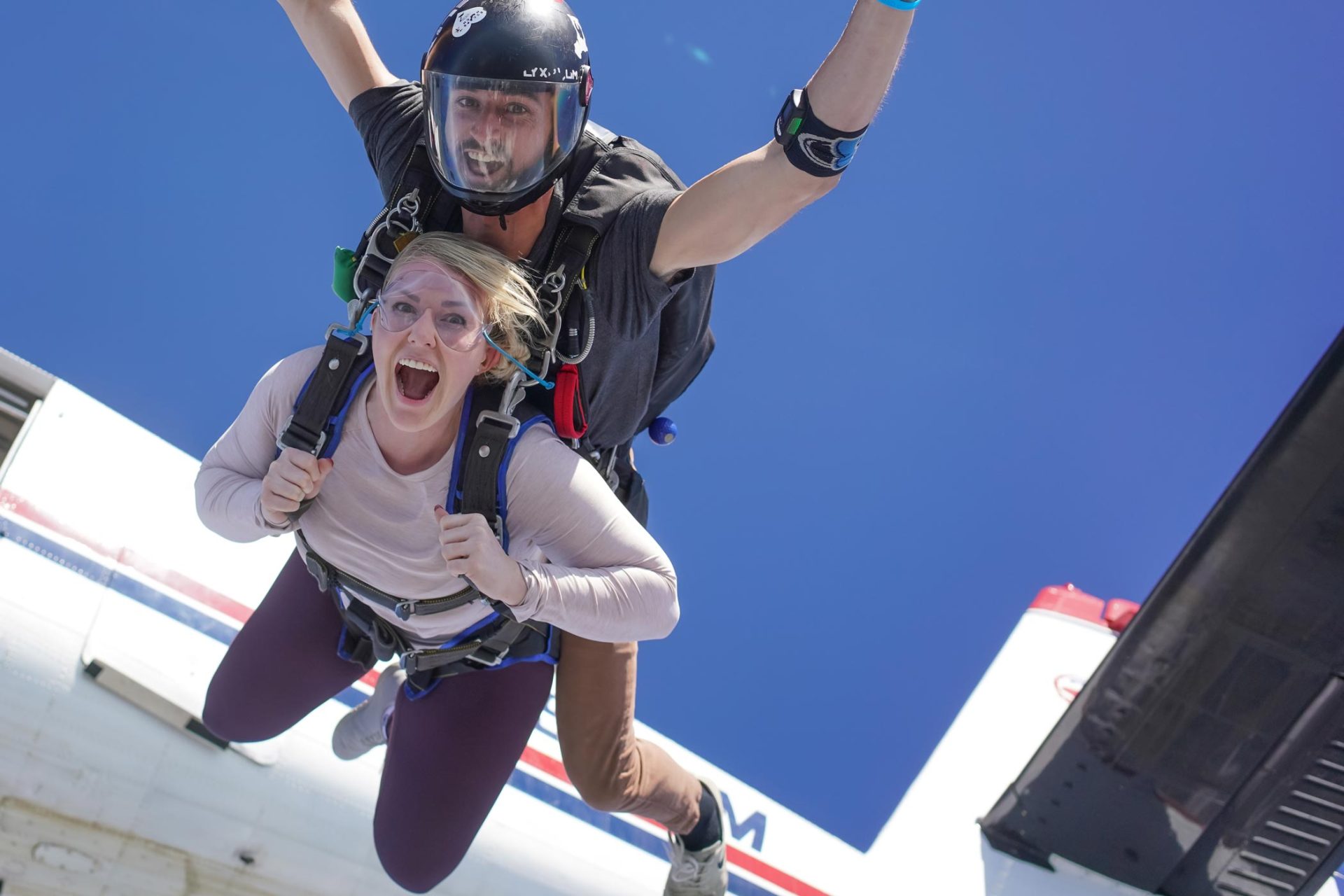
Need More Tandem Info?
DZ Locator
Find a skydiving center near you.
